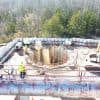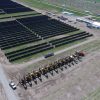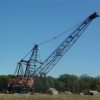PROJECT DETAILS
Prior to 1940, human habitation was sparse within the Kissimmee River Basin. Following World War II, rapid growth and development set the stage for extensive property damage when a severe hurricane struck the area in 1947. The massive flooding sparked public pressure to develop measures to reduce the threat of potential flood damage to property. In 1948, Congress authorized the U. S. Army Corps of Engineers to initiate construction of the Central and Southern Florida Project for Flood control and protection. Starting in 1962, the Kissimmee River was channelized and transformed into a series of water reservoirs.
The original Kissimmee River stretched from Orlando southward to Lake Okeechobee in central Florida. The river moved slowly, meandering for approximately 103 miles within a one or two mile wide floodplain and supported about 35,000 acres of wetlands.
The effects of the channelization of the Kissimmee River resulted in shortages of clean water at critical times, eliminated 35 miles of meandering river channel along with 6200 acres of floodplain wetlands, and altered the hydrologic characteristics of the surrounding area.
In response to public concerns, the U. S. Army Corps of Engineers and the South Florida Water Management District have joined forces to restore the ecosystem with a program that covers a 9000 square mile area that includes the Kissimmee River Basin, Lake Okeechobee, the Everglades, Big Cypress Swamp and the Estuaries of Florida Bay, Biscayne Bay and the Ten Thousand Islands.
International Technologies Corporation ( IT ) was contracted to head up the first phase of this massive restoration project. They have approximately 60 pieces of earth moving equipment onsite and are moving an average of 50,000 cubic yards of material back into the 30 foot deep, 300 foot wide canal that is the present day Kissimmee River.
The canal system has a number of water control structures and navigational locks which were constructed at various locations along the river. A select few of these structures, made of concrete and steel must be removed in order to restore the wetland to it’s original state. IT Corporation feels that blasting is the best means of removing these structures and has contracted Dykon to shoot the first set of structures on this ongoing restoration project.







